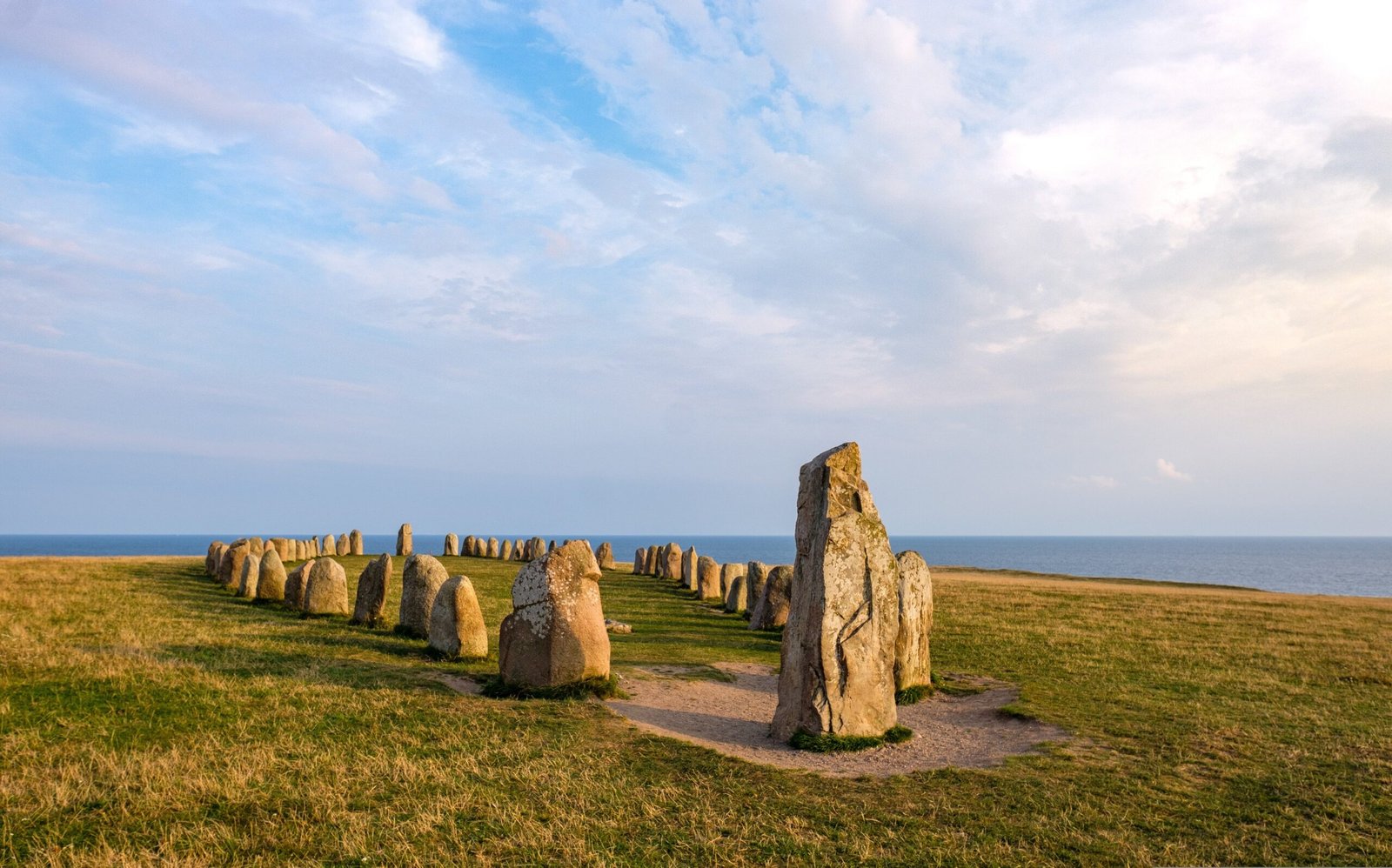A real-life mystery has baffled scientists and locals for over a century a village clock that refuses to tick past midnight. Discover the chilling story, hidden history, and supernatural theories behind this unsolved time anomaly. The Midnight Clock Mystery That Defies Logic In a quiet European village nestled in the Carpathian foothills, a church tower clock has refused to tick past midnight for over 100 years. It is not broken. It is not low on power. It is not mechanical failure. It simply stops. Every single night. At exactly 12:00 AM. Despite modern repairs and upgraded parts, nothing changes this eerie routine. Where Is This Strange Clock? The clock stands tall in Tihosuco, a forgotten village straddling the border between Poland and Ukraine. Installed in 1906 atop a bell tower rumored to sit on ancient pagan ruins, the clock once worked flawlessly. But after a mysterious fire in 1923, things changed. Since then, the mechanism freezes precisely at midnight like time itself refuses to go forward in that tower. Experts Tried to Fix It and Failed Engineers and horologists from across Europe have made countless attempts to fix the clock. They have replaced: Gears Springs Pendulum Clock face Full internal system Each time, the same result:It works…..until midnight. Then, like clockwork, it hesitates and stops. Local Legends Say the Clock Is Cursed Villagers say the clock isn’t broken. They believe it’s haunted or worse, a spiritual seal keeping something trapped. One tale claims a monk vanished inside the tower during the 1923 fire. Another legend warns that if the clock ever ticks past midnight unaided, “the dead will walk before dawn.” No one has tested it. What Scientists Discovered In 2001, a research team from Humboldt University in Berlin used: Motion sensors Magnetic field detectors Atomic timing tools Their conclusion? No mechanical faults No magnetic interference No rational explanation But they did detect a brief electromagnetic pulse at exactly midnight, consistent with a “non-localized field disruption.” A Psychological or Quantum Phenomenon? Some experts propose a collective psychological theory. Could the villagers’ belief in the curse influence the environment? This aligns with ideas like: Mass belief shaping reality Quantum consciousness The observer effect These fringe ideas have gained attention in theoretical physics circles. Why Midnight? The Symbolic Meaning Midnight is more than just a time it holds deep symbolism: The “witching hour,” linked to spirits and supernatural forces The moment one day dies and another is born A threshold between sleep, dreams, and the unknown The clock doesn’t just stop time.It pauses the boundary between days and something else. Did You Know? In many cultures, clocks stopping at midnight are linked to death or spiritual transitions. The Doomsday Clock uses midnight as the metaphorical point of no return. Paranormal researchers report that clocks and devices often glitch around energy hotspots or during temporal anomalies. The Takeaway: What Is This Clock Really Stopping? This clock still functions just not when the world goes quiet. Whether it is a mechanical failure, a psychological projection, a magnetic mystery, or something truly unexplainable, the frozen clock of Tihosuco remains one of the strangest unsolved time anomalies of the modern era. Maybe the real question isn’t why it stops. Maybe it is what it is stopping us from seeing.
This Country Uses 13 Months and It’s Surprisingly Brilliant
One country still uses a 13-month calendar defying the global norm. Discover why Ethiopia’s unique calendar works, how it came to be, and what makes their timekeeping system so fascinating. The Country with 13 Months in a Year And Why It Works Imagine a place where the year is 7–8 years behind the rest of the world, where the New Year begins in September, and where the calendar has 13 months instead of 12. Sound like science fiction?It’s not. Welcome to Ethiopia the East African nation that runs on its own unique calendar, and yes, it really works. Ethiopia’s Calendar: 13 Months of Sunshine While most of the world uses the Gregorian calendar (introduced in 1582 by Pope Gregory XIII), Ethiopia follows the Ethiopian calendar, which is: 7–8 years behind the Gregorian calendar Composed of 13 months Still widely used officially and culturally across the country And here is the fun part: Ethiopians proudly say they enjoy “13 months of sunshine.” How Does It Work? The Ethiopian calendar is based on the ancient Coptic calendar, which itself derives from the Egyptian solar calendar. Here’s how it breaks down: 12 months with 30 days each A 13th month, called Pagumē, with 5 days (or 6 in a leap year) The Ethiopian New Year starts on Meskerem 1, which usually falls on September 11 (or 12 in leap years) in the Gregorian calendar So while the rest of the world may be celebrating January 1st, Ethiopians start their year months earlier with traditions, music, and flowers. Why Is Ethiopia’s Calendar Behind? The discrepancy in years stems from differences in calculating the birth of Christ. The Gregorian calendar (used by most of the world) places Christ’s birth in 1 AD. The Ethiopian calendar, however, places it 7–8 years later, based on older religious interpretations. As of 2025 Gregorian, Ethiopia is still in the year 2017 or 2018 (depending on the month). Time travel, anyone? Cultural and Practical Use Unlike some ancient calendars that are only symbolic today, Ethiopia’s 13-month calendar is alive and well, used in: Government documents Education and schools Banking and legal systems Religious observances Daily conversation Ethiopians often write both the Ethiopian and Gregorian dates on official papers to align with the rest of the world. Why It Still Works So Well Here is why Ethiopia’s calendar system has stood the test of time: Consistency Every month has 30 days (no more figuring out which months have 28 or 31!) Cultural identity It reinforces Ethiopia’s unique heritage and independence it is one of the few African countries never fully colonized. Agricultural relevance The calendar aligns with Ethiopia’s seasons and farming cycles. Religious tradition The Ethiopian Orthodox Church remains a strong influence, and its calendar underpins many annual events and holy days. A Calendar That Makes You Rethink Time In a globalized world where time zones, leap years, and daylight saving confuse even the best of us, Ethiopia’s calendar seems…..refreshingly logical. It reminds us that the way we track time isn’t absolute it is cultural, historical, and sometimes, political. Time is not just what’s on your watch. It is a worldview. Did You Know? Ethiopia is not the only culture with a non-Gregorian calendar Iran, Nepal, and Thailand all use alternative systems alongside Gregorian time. In Ethiopia, the Christmas holiday is celebrated on January 7, aligning with the Julian calendar. The 13th month, Pagumē, is often treated like a “bonus” month some workers are even paid an extra salary day for it!
The Secret of the Animal That Never Grows Old
The Secret of the Animal That Never Grows Old Did you know there is an animal that technically never dies of old age? Discover the “immortal” creature that defies aging and what it could teach us about eternal life. The Animal That Doesn’t Die of Old Age What if death wasn’t inevitable? In the natural world, aging is a process we all expect: cells weaken, organs deteriorate, and eventually, life ends. But deep beneath the waves, there is one tiny creature that breaks all the rules. Meet the Turritopsis dohrnii more famously known as The Immortal Jellyfish. This microscopic marvel has the scientific community stunned….because it might just have found the fountain of youth. What Is the Immortal Jellyfish? Native to the Mediterranean Sea (but now found worldwide), Turritopsis dohrnii is a small, transparent jellyfish no larger than a pinky nail. At first glance, it looks like any ordinary jellyfish. But here is where it gets weird: When it is injured, stressed, or aging, instead of dying, it reverts back to its juvenile polyp stage starting its life cycle all over again. This process is known as transdifferentiation, and it’s unlike anything else in the animal kingdom. How It “Rewinds” Its Life Most jellyfish have a linear life cycle: Egg Larva Polyp Medusa (adult jellyfish) Death But Turritopsis dohrnii breaks the cycle. When faced with threats, it: Transforms its mature medusa cells back into polyp-like cells Grows a new polyp colony Clones itself into new jellyfish It is like a butterfly turning back into a caterpillar and then becoming a butterfly again. Over and over. Why Doesn’t It Die of Old Age? Biologically, this jellyfish doesn’t age in the way humans do. It: Repairs cellular damage Avoids DNA degradation Doesn’t suffer the same immune system decline as mammals Can repeat its life cycle indefinitely (in theory) This makes it biologically immortal meaning it can die from injury, predators, or disease, but not from aging. What This Means for Science (and Humans) The immortal jellyfish has become a hot topic in aging research, and for good reason: Its transdifferentiation ability could hold clues for regenerative medicine Scientists are studying its genes to understand how aging can be reversed It could inspire anti-aging therapies, especially for degenerative diseases Imagine being able to reprogram human cells to reverse aging…Sounds sci-fi?Well, Turritopsis dohrnii is living proof that nature already does it. Did You Know? Some immortal jellyfish have been known to repeat this rebirth cycle dozens of times They are so small, millions could fit in a single swimming pool Other long-living creatures include the Greenland shark (lives 400+ years) and hydra (which also show signs of negligible aging) The Takeaway The Turritopsis dohrnii reminds us that life and death aren’t always as fixed as we think. Aging may be universal, but it is not unstoppable.In a quiet corner of the ocean, a tiny jellyfish is proving that the rules of biology can be rewritten. Who knows?The secrets of human immortality might be floating somewhere just beneath the surface.
Strange Mandela Effect Examples That will Blow Your Mind
Do you clearly remember something that never actually happened? You are not alone. Discover the eerie science and theories behind the Mandela Effect and why so many people misremember the same things. The Mandela Effect: Why You Are Not the Only One Who Misremembers Do you remember the Monopoly man having a monocle?Did you grow up reading about the Berenstein Bears or was it the Berenstain Bears? What if we told you that many people around the world remember the same incorrect details….and they are just as confused as you are? Welcome to the strange world of the Mandela Effect a mind-bending phenomenon where groups of people recall the same false memories, often with total confidence. Is it just faulty memory or a glitch in reality? Let us explore the psychological science, famous examples, and wildest theories about why you are not alone in remembering something that never happened. What Is the Mandela Effect? The term “Mandela Effect” was coined by Fiona Broome in 2009 after she discovered that many people, including herself, wrongly remembered Nelson Mandela dying in a South African prison in the 1980s. In reality, Mandela was released in 1990 and became South Africa’s president in 1994. He passed away in 2013. But the memory felt real not just to Fiona, but to thousands of others. Thus, the term was born: The Mandela Effect = collective misremembering of a fact or event. Most Famous Mandela Effect Examples 1. The Monopoly Man’s Monocle Has a monocle?Nope he never did. People confuse him with Mr. Peanut. 2. “Luke, I am your father.” Most people quote Darth Vader from Star Wars like this: “Luke, I am your father.” But the actual line? “No, I am your father.” 3. The Berenstein vs. Berenstain Bears Millions remember this children’s book series as “Berenstein Bears” with an -ein ending.Reality? It is “Berenstain Bears” with -ain. 4. Fruit of the Loom Logo Remember a cornucopia behind the fruit?It never existed. But many people swear they saw it. 5. Pikachu’s Black-Tipped Tail Pokémon fans often picture Pikachu with a black tip on his tail.It is just yellow. No black tip. Ever. 6. Febreze or Febreeze? Most people recall “Febreeze” with double “e.”It is actually spelled “Febreze” with one “e”. So….What is Really Going On? While some blame parallel universes or time glitches, most scientists say the Mandela Effect comes from how memory actually works: 1. Memory Is Not a Recording It is a Reconstruction Your brain doesn’t store memories like a video camera. Instead, it reconstructs them based on: Sensory cues Emotions Context clues Prior knowledge This means every time you recall something, you are reshaping it and potentially introducing errors. 2. Confabulation & False Memories “Confabulation” happens when your brain fills in missing details with plausible but false information. If your brain expects the Monopoly man to have a monocle, it adds one. If you have seen “-stein” more often in names, you assume “Berenstein” is correct. It is not lying. It is how the brain copes with gaps. 3. The Power of Suggestion & Collective Belief When many people misremember the same thing, it reinforces the false memory. This effect can be amplified by: The internet Pop culture Social media “corrections” A single person’s memory error can quickly snowball into mass misremembering. The Wild Theories: Are We in a Simulation? While psychology explains most Mandela Effects, the internet loves wilder ideas, like: Parallel universes merging Collective consciousness accessing alternate timelines Simulation theory we are in a programmed reality, and some “details” get overwritten during software updates Sound crazy? Maybe. But when your own memory betrays you…..anything feels possible. Real Studies on the Mandela Effect Psychologists have studied this phenomenon using controlled experiments: A 2016 study at the University of Chicago found that false memories can be implanted with surprising ease just through misleading photos or text. Another study showed that people often trust group memory over their own leading to “shared hallucinations.” Did You Know? Up to 76% of adults report vivid false memories. The Mandela Effect has been observed in historical facts, logos, movie lines, and celebrity deaths. The term is now used in pop culture to describe anything that feels “off from what we remember.” The Takeaway The Mandela Effect teaches us something powerful: Memory is not truth.It is perception.And sometimes, what feels true…never was. So if you remember Nelson Mandela dying in prison, Pikachu with a black tail, or “Looney Toons” instead of “Looney Tunes,” do not worry: You are not crazy.You are just human. And you are definitely not alone.
How Monopoly Unlocks Hidden Real Estate Secrets
Think Monopoly is just a board game? Think again. Discover how this classic game secretly teaches real-world real estate principles like cash flow, investing, leverage, and negotiation. Why Monopoly Is Actually Teaching You About Real Estate Most people see Monopoly as a long, competitive board game that ends in flipped tables and family feuds.But behind the colorful properties, Chance cards, and plastic hotels lies something surprising: Monopoly is one of the best beginner lessons in real estate investing you will ever find. Seriously. It teaches the core principles that real-life investors use like leveraging assets, creating passive income, and knowing when to play defense. Let us break it down. 1. Buy Assets, Not Just Spaces In Monopoly, the player who wins isn’t the one who passes Go the most it is the one who owns the most income-producing properties. Every purchase you make becomes a cash flow machine, collecting rent every time someone lands on your property. In real life?That is the foundation of real estate: Buy properties → Rent them out → Create passive income. 2. Cash Flow Is King Ever noticed that you can have a lot of properties but still lose if you are broke? That is because cash flow not net worth wins the game. If your expenses outpace your income (rent from opponents), you will be forced to mortgage properties or go bankrupt. Real-life parallel:You may “own” a lot, but without liquidity, you can’t pay the bills. Smart investors always manage cash flow first. 3. The Power of Development In Monopoly, owning a color set (like the orange properties) unlocks your ability to build houses and hotels which massively increase rent. This mimics real estate development in real life: Buy land or property Improve it (renovate/build) Charge higher rent or resell at a profit The return on investment comes from how well you develop and manage your assets. 4. Leverage and Risk Management When funds get tight, you can mortgage properties to raise cash. That’s leverage. But there’s a trade-off:Mortgaged properties don’t earn income, and you must pay interest (in the game and in real life). Monopoly subtly teaches the risks of: Over-leveraging Owning too many low-value properties Ignoring liquidity Smart investors know when to borrow and when to slow down. 5. Negotiation Wins Games (and Deals) Some of the most intense Monopoly moments are off the board when players trade properties, form alliances, or bluff their way to an advantage. This reflects the real-world importance of negotiation in real estate: Striking creative deals Trading non-cash value (e.g., future favors or bundled offers) Knowing when to walk away Real estate isn’t just about what you buy it is how you deal. 6. Location Still Matters In Monopoly, not all spaces are created equal. The orange and red properties (like New York Ave) are statistically the most landed-on, making them extremely valuable. This teaches one of the most timeless lessons in real estate: Location, location, location. Buying in the right spot means more traffic, more rent, and more returns both in the game and in life. 7. Luck Matters But Strategy Wins Yes, dice rolls introduce randomness. But the winners are rarely just lucky. They: Buy smart Manage risk Build at the right time Strike key trades Just like in real estate investing, you can not control everything but you can control how prepared you are when opportunity lands on your doorstep. The Takeaway It turns out Monopoly isn’t just child’s play.It is a crash course in: Real estate investment Asset management Risk and reward Strategic thinking So next time you play, ask yourself: Are you rolling for fun or playing to learn? Because in both the game and the real world…those who understand property, win.
Cartoons You Loved Had Dark Secrets Here is the Truth
You thought they were just weird cartoons but many of your childhood favorites have disturbing, real-life origins. Discover the shocking true stories behind the strangest animated shows ever made. The True Stories Behind the Strangest Cartoons You Watched You probably remember them vividly: The creepy characters The bizarre plots The eerie music That weird feeling you couldn’t shake even as a kid Those strange cartoons weren’t just imagination run wild they often had real stories, personal trauma, or dark history behind them. What if your favorite oddball cartoon was inspired by a nightmare, a tragedy, or a conspiracy? Buckle up. The truth behind these animated classics is stranger than fiction. 1. Courage the Cowardly Dog Inspired by Real Isolation and Horror What It Looked Like:A pink dog protecting his elderly owners from monsters and supernatural forces in the middle of nowhere. The Real Story:Courage and his “Nowhere” home were inspired by real rural isolation in New Mexico. The show’s creators were influenced by actual paranormal reports, including mysterious disappearances and UFO sightings in remote desert towns. One theory links the setting to the Roswell incident, and another to the legend of the Skinwalker Ranch. Creepy, right?What is worse some fans believe the villains represent fears of growing old, abandonment, and trauma. 2. Courage’s Muriel and Eustace Based on a Real Couple? Internet sleuths have connected Courage’s elderly owners to William and Margaret Patterson, a couple who vanished without a trace from El Paso, Texas in 1957. They lived in a quiet house with no neighbors, and their disappearance was never solved. Coincidence…..or inspiration? 3. Rugrats: A Dark Fan Theory You Won’t Forget The Show:A lighthearted cartoon about babies and their imaginary adventures. The Theory:According to a chilling fan theory, all the babies are figments of Angelica’s imagination, created as a coping mechanism for trauma and loneliness. In this version: Chuckie died with his mom Tommy was stillborn The DeVilles had an abortion, so Angelica imagined twins Angelica’s behavior is linked to mental illness and neglect Disclaimer: This theory was never confirmed by the creators, but it spread like wildfire proving just how unsettling the show could be beneath the surface. 4. Dexter’s Laboratory Inspired by Real Sibling Rivalry Dexter was reportedly modeled after creator Genndy Tartakovsky’s real-life experience growing up as a young science enthusiast with an overbearing sibling. He described his older brother as “Dee Dee-like” chaotic, curious, and always ruining his experiments. And Dexter’s thick accent? It was inspired by his Russian roots, blending with classic European scientist tropes. 5. Invader Zim Created Out of Teenage Frustration This chaotic, creepy cult hit was the brainchild of Jhonen Vasquez, a comic book artist known for Johnny the Homicidal Maniac. Nickelodeon took a massive gamble letting a dark humor writer create a kids’ show. The result? A dystopian alien invasion cartoon laced with satire, body horror, and commentary on humanity’s stupidity. Vasquez said in interviews that Zim was a way to vent his hatred for suburban blandness and authority figures. 6. The Marvelous Misadventures of Flapjack Born from a Troubled Childhood This offbeat show about an orphan and an alcoholic pirate seeking candy islands was created by Thurop Van Orman, who said it reflected his own feelings of fear, loneliness, and wonder growing up. The animation’s eerie tone, grotesque close-ups, and surreal setting were inspired by old nautical myths, depression-era cartoons, and dark bedtime stories. Fun Fact: The show paved the way for Adventure Time and Gravity Falls and many of their creators got their start on Flapjack. 7. Adventure Time A Post-Apocalyptic World? What seems like a fun fantasy world is actually a world recovering from nuclear fallout. Fans pieced this together from background clues: Broken technology Mutated creatures References to “The Mushroom War” A desolate Earth-like landscape Creator Pendleton Ward never confirmed this outright but writers later admitted: “Yes, Adventure Time takes place after the end of the world.” 8. Ed, Edd n Eddy A Purgatory Theory That Got Too Popular This Cartoon Network hit featured quirky characters who never seemed to grow up, go to school, or leave their cul-de-sac. A chilling theory claims the characters are actually dead children in purgatory, each from a different time period and unable to move on. While not supported by the creators, this fan theory became so popular that it reached conspiracy levels of viral fame. Why Do These Cartoons Feel So Unsettling? The art styles were often distorted or surreal The music and sound design were offbeat or eerie The plots broke traditional storytelling rules Some were inspired by real trauma, isolation, or fear As kids, we may not have known why they felt strangeBut now? We can see these shows were often creative expressions of deeper human experiences. Did You Know? Courage the Cowardly Dog won an award for “Most Disturbing Kids’ Show” Invader Zim was canceled because it was deemed “too dark” for Nickelodeon Rugrats’ creators originally pitched the show with no adult dialogue everything from a baby’s point of view
How the World’s First Calendar Changed Everything
Discover how the world’s first calendar reshaped humanity. From agriculture to religion and modern timekeeping, this ancient innovation changed the course of civilization forever. How the World’s First Calendar Changed Everything We take calendars for granted today little boxes filled with appointments, holidays, and birthdays. But imagine a time when no one knew what day it was. No seasons, no months, not even the concept of a “year.” Then one day, humans looked up at the sky…..and began to track time itself. The invention of the first calendar didn’t just mark time it transformed humanity. From agriculture to religion, politics to science, the world’s first calendar marked the beginning of civilization as we know it. What Was the World’s First Calendar? The title of “world’s first calendar” is widely believed to belong to a prehistoric lunar calendar discovered in Scotland yes, Scotland! In 2004, archaeologists uncovered a site in Aberdeenshire dating back to around 8,000 BCE. It featured a row of pits that appear to track the phases of the moon making it over 5,000 years older than Stonehenge. This means that long before written language or the wheel, ancient humans were already tracking time most likely to plan hunts, migrations, and eventually, agriculture. Why Calendars Changed Everything Before calendars, life was ruled by unpredictability. Weather, crops, and social events happened at random. The calendar brought order to chaos. Here is how: 1. Agriculture Became Possible Farming depends on timing when to plant, when to harvest, when to prepare. With a calendar, early societies could: Predict seasonal cycles Schedule irrigation and harvests Track rainy and dry seasons The calendar turned humanity from nomadic foragers into settled farmers laying the foundation for cities and empires. 2. Religion Was Structured Calendars gave rise to sacred rituals and holidays, often based on: Lunar phases Solstices and equinoxes Agricultural cycles Ancient Egyptians celebrated flood seasons. Mayans worshipped cosmic alignments. Christians celebrate based on lunar dates (Easter). The calendar turned time into something sacred and built entire belief systems around it. 3. Governments and Empires Emerged A calendar allowed for: Tax collection at specific times Military campaigns during predictable seasons Construction and engineering projects with timelines Time became political controlled by rulers and priests to maintain power. The Roman calendar, for instance, was adjusted by emperors. Julius Caesar’s reform gave us the Julian calendar which evolved into the Gregorian calendar most of the world uses today. 4. Science and Astronomy Were Born Calendars weren’t just made from the sky they also inspired science. Tracking time led to: Astronomy Mathematics Navigation The concept of years, months, days, and hours From lunar months to solar years, ancient scholars like the Babylonians, Egyptians, and Maya all developed incredibly accurate calendar systems long before modern telescopes. Some Ancient Calendars That Changed History Lunar Calendar (Mesopotamia, ~4000 BCE) Used moon phases to divide months; influenced Jewish, Islamic, and Chinese calendars. Egyptian Solar Calendar (around 3000 BCE) 365-day year based on the sun and Nile floods; laid the foundation for the modern calendar. Maya Calendar System Used a complex system of cycles, including the famous Long Count measuring time over thousands of years. Did You Know? The word “calendar” comes from the Latin calendae, the term for the first day of the Roman month when debts were due. The Gregorian calendar, introduced by Pope Gregory XIII in 1582, is now the most widely used civil calendar worldwide. Some cultures still follow lunar calendars today, like the Chinese, Hebrew, and Islamic calendars. The Takeaway Before calendars, life was reactive.After calendars, humanity became proactive able to plan, organize, and thrive. The calendar didn’t just count the days. It shaped civilization. From planting crops to predicting eclipses, from paying taxes to celebrating birthdays everything changed when we learned to track time.
Why You will Be Typing with Your Thoughts Sooner Than You Think
Imagine typing emails, texts, or entire essays just by thinking. Brain-computer interfaces are making mind-typing a reality, and it’s coming faster than you think. Here is how. Why You Will Be Typing with Your Thoughts Sooner Than You Think What if you could send a text, write an email, or search Google….without touching a keyboard? It sounds like something out of a sci-fi movie but it is already happening in real life. Thanks to advancements in brain-computer interfaces (BCIs), we’re entering an era where typing with your thoughts is no longer a dream it is a rapidly evolving technology. And it is coming for your everyday life sooner than you think. The keyboard isn’t dying it is evolving into your brain. What Is Thought-Typing? Thought-typing is the ability to convert neural activity into digital text essentially letting your brainwaves type for you, bypassing your fingers entirely. It works through a brain-computer interface (BCI), which uses sensors (implanted or external) to detect brain signals, then translates those signals into commands a computer can understand. And no, you don’t need to be a cyborg (yet). Real Examples That Already Exist 1. Elon Musk’s Neuralink In 2024, Neuralink successfully implanted a chip in a human brain. The user could move a computer cursor with his mind and the company’s goal? Enable thought-based typing and communication for people with paralysis. Their ultimate vision: Control your phone or computer Compose messages and emails Even play video games all with pure thought 2. Stanford’s Brain-to-Text Study Researchers at Stanford created a system where a man typed 90 characters per minute using only his thoughts setting a new speed record for mind-typing. How?By implanting electrodes that read neuron firing patterns linked to hand movement imagery, even though his hands couldn’t move. 3. Facebook’s (Meta) BCI Project Meta’s research team once demonstrated a prototype that could decode imagined speech in real time, with a vision for future AR glasses that can read subtle brain signals and translate them into text or commands. How Does It Work? BCIs use a combination of: EEG (Electroencephalography): Reads brain activity using external electrodes on your scalp Implanted electrodes: For more precise, high-resolution data Machine learning: Trains algorithms to recognize thought patterns and associate them with letters, words, or actions It’s not magic it is math and neurons working in harmony. Why This Changes Everything Imagine the possibilities: Paralyzed patients regain the power to communicate Writers, coders, designers work at the speed of thought Multitasking becomes seamless, hands-free, and intuitive No more typos or auto-correct fails (eventually) Your thoughts could become your most efficient input device. How Soon Will It Happen? Some of it is already here especially in medical applications. Experts predict: Widespread clinical use of BCI-powered typing by 2027–2030 Non-invasive consumer-grade BCI headsets for hands-free interaction within 5–10 years Full integration with AR/VR headsets, allowing “mind control” of apps and environments In fact, early versions of EEG headsets for gaming and meditation already exist today. The Challenges Ahead Of course, it is not all smooth typing from here: Accuracy: Interpreting brain signals can still be inconsistent Privacy: Who owns your thoughts once they’re decoded? Ethics: What if mind-reading becomes too invasive? Accessibility: Will this tech be available to all, or just a privileged few? Thought-typing is powerful but like all tech revolutions, it needs safeguards. Did You Know? The brain generates enough electricity to power a light bulb Your brain processes about 50,000–70,000 thoughts per day Thought-to-text systems can already outperform some smartphone typing speeds without moving a muscle The Takeaway You may not have tossed out your keyboard yet, but the countdown has started. The future of typing won’t be loud clicks and keys it will be quiet, seamless thought. And sooner than you think, you’ll be able to say: “Typed with my mind. Sent with my thoughts.”
Your Body Has a ‘Second Brain’ And It is in a Surprising Place
Did you know your body has a second brain and it is in your gut? Discover how your digestive system thinks, feels, and affects your mood, memory, and mental health. Your Body Has a ‘Second Brain’ And It is in a Surprising Place Think your brain is the only one calling the shots? Think again. Buried deep within your abdomen lies an unexpected mastermind your gut. Scientists now call it the “second brain” because of how complex, independent, and shockingly powerful it is. This isn’t just about digestion. Your gut can think, feel, and influence your emotions, immune system, and even memory. Welcome to the world of the enteric nervous system (ENS) a neural network in your belly that is smarter than you think. What Is the “Second Brain”? Your enteric nervous system (ENS) is a vast network of over 100 million neurons embedded in the walls of your gastrointestinal tract. That is more than the spinal cord and enough to earn it the nickname “the second brain.” This system: Controls digestion independently of the brain Sends signals to your central nervous system Produces neurotransmitters like serotonin and dopamine Can “learn” and respond to changes in your gut It doesn’t make conscious decisions but it can sense, react, and influence much more than your bathroom schedule. The Science Behind It Researchers discovered that the gut’s nervous system can: Operate without any input from the brain React to emotions like stress, fear, and anxiety Trigger physical responses like butterflies in your stomach or gut-wrenching pain In fact, over 90% of the body’s serotonin the “feel-good” neurotransmitter is produced in the gut, not the brain. Your mood is being made in your gut. The Gut-Brain Connection: How They Talk The gut-brain axis is the two-way communication system linking your gastrointestinal tract to your brain via: The vagus nerve (think of it as a superhighway) Chemical messengers like serotonin and cortisol Your gut microbiome (the trillions of bacteria living in your intestines) When your gut is upset, it sends stress signals to your brain. And when you are stressed? Your gut responds often with cramps, bloating, or even diarrhea. How This Affects You Every Day Your gut’s “second brain” doesn’t just digest it influences: Mood & Mental Health Poor gut health is linked to depression, anxiety, and even brain fog. Some researchers are exploring probiotics as antidepressants. Food Cravings Your gut bacteria can manipulate your brain into craving sugar, carbs, or fats literally influencing your willpower. Sleep Because the gut helps produce melatonin and serotonin, it plays a role in your sleep cycle and circadian rhythm. Memory & Focus Imbalanced gut bacteria are now being studied in connection with Alzheimer’s, autism, and cognitive decline. Did You Know? The gut has so many neurons, it can learn and remember certain reflexes without brain involvement There is emerging evidence that the gut microbiome can influence your personality Ancient medical systems like Ayurveda and Chinese medicine emphasized gut health thousands of years ago So, How Do You Feed Your Second Brain? Your gut thrives on the right fuel. Here is what to focus on: Eat More: Fiber-rich foods (beans, greens, oats) Fermented foods (yogurt, kimchi, sauerkraut) Prebiotics (garlic, onions, bananas) Omega-3s (fish, flaxseed) Avoid Excess: Processed sugar Artificial sweeteners Alcohol Antibiotics (unless prescribed) Tip: What is good for your gut is often good for your brain. The Takeaway You are not just thinking with your head you are feeling, reacting, and responding with your gut. The second brain may not write poetry or solve equations, but it plays a profound role in your: Mood Immunity Mental clarity Long-term health Listen to your gut it is smarter than you think.
The 3 Strangest Political Experiments That Actually Worked
From pirate democracy to a city run by artists, explore 3 bizarre political experiments that sounded crazy but surprisingly worked. These real-life political oddities defied the odds. The 3 Strangest Political Experiments That Actually Worked Politics is usually associated with dry debates, rigid systems, and endless bureaucracy. But sometimes….things get weird. Throughout history, bold thinkers and desperate societies have thrown out the rulebook and tried strange political experiments ideas that sounded absurd at the time but somehow actually worked (at least for a while). These weren’t just wild ideas they were functioning societies with real people, real power, and sometimes, real success. Here are 3 of the strangest political experiments that didn’t crash and burn they thrived (even if only temporarily). 1. Pirate Democracy (17th–18th Century Caribbean) Yes, pirates the sword-wielding, rum-drinking, treasure-hunting outlaws of the sea were pioneers in one of the earliest and most radical forms of democracy. What Made It Strange? Pirates, unlike monarchies and empires of the time, voted for their captains, shared loot equally, and followed written codes (called the “Articles”). On pirate ships, power came from the bottom up, not the top down. Captains could be voted out. Everyone got a share of the treasure. Injury compensation existed. And punishments were decided by majority vote. Why It Worked: It created order among chaos Gave crew members a reason to be loyal Provided early models for constitutional law Some historians argue that pirate democracy influenced later revolutionary ideals in America and France. 2. The Artistic Government of Christiania (Copenhagen, Denmark) In 1971, a group of squatters, artists, and free thinkers took over an abandoned military base in the heart of Copenhagen and declared it “Freetown Christiania.” What Made It Strange? This was a self-proclaimed anarchist commune, run not by politicians but by consensus, creativity, and community meetings. No official police. No government rules.Just art, music, peace… and an occasional cannabis trade. Christiania was like a political LSD trip that refused to end. Why It Worked: Citizens were deeply involved in decisions Crime remained lower than surrounding areas for years It became a tourist attraction, even as it defied national law To this day, Christiania exists as a partially autonomous zone proof that non-traditional, counterculture governance can survive inside a modern democracy. 3. Iceland’s Crowd-Sourced Constitution (2011) After the 2008 financial crash devastated Iceland’s economy and trust in government, the people demanded a total reboot. But instead of leaving it to politicians, they tried something new: Let regular citizens write the constitution online. What Made It Strange? The constitutional council used social media, Facebook polls, open forums, and crowd-sourced ideas to write a new constitution. Icelanders could comment, edit, and vote on what they wanted in their foundational law. Why It Worked (Sort Of): Massive public participation A draft that reflected people’s true values Global praise as a model for digital democracy Though politics stalled the final ratification, the experiment remains a landmark in democratic innovation and parts of the draft have influenced Icelandic reforms since. What Do These Experiments Teach Us? These oddball political systems worked not because they were perfect, but because they were: Boldly different Grounded in shared purpose More inclusive than traditional power structures From pirate ships to digital platforms, these experiments show that power doesn’t always need to come from presidents or parliaments. Sometimes, the strangest ideas create the strongest bonds. Did You Know? Pirate ships had injury insurance policies, paying crew members for lost limbs Christiania has no cars, operates with collective ownership, and hosts open-air concerts Iceland’s constitutional council included a farmer, a pastor, and a university student not just lawyers or politicians










